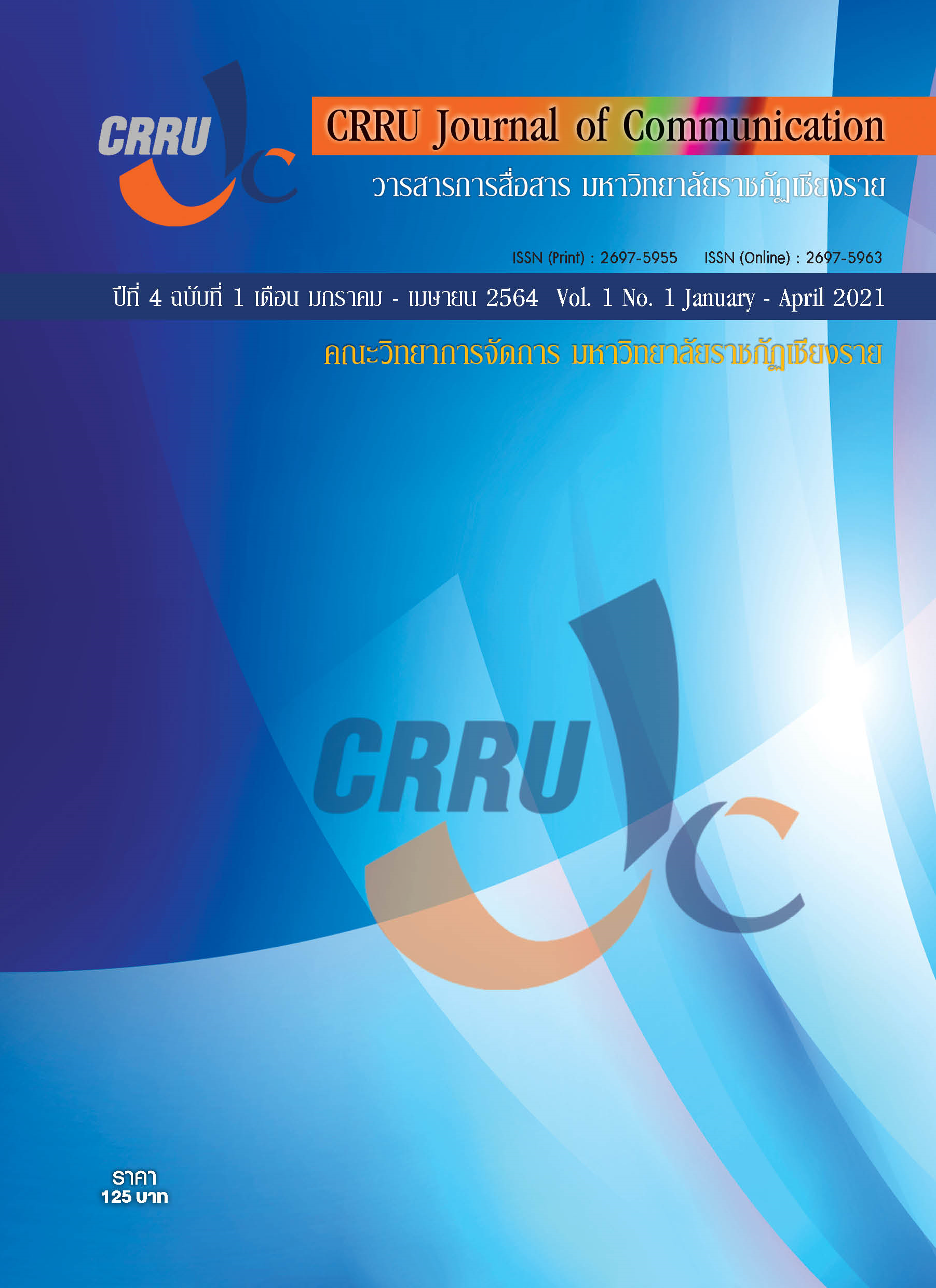DEVELOPMENT GUIDELINES FOR AN AIRPORT MOBILE APPLICATION
Main Article Content
Abstract
This paper presents the development guidelines for an Airport Mobile Application with the objectives to (1) study the present of an Airport Mobile Application usability and (2) to present the development guidelines for an Airport Mobile Application. Survey data were collected from representative samples of 400 AOT Digital Airports’ Users. The questionnaire was assessed with the aid of statistical analysis, Mean, Percentage and Standard Deviation were quantified.
The research base on the theory of Technology Acceptance Model, Online Consumer Behavior and service contents based on an Airport Service Quality. The results of the research showed that users accepted the overall technology at a high level, with Technology Acceptance Model: Perceived Usefulness was the greatest, but Perceived Risk was only at a moderate level (mean was 3.23). And found that users have a high level of Online Consumer Behavior as well, with the least behavior on Online Entertainment at a moderate level (mean was 3.23). And service contents within an Airport Mobile Application that users want the most is to be able to assess the satisfaction of using various airport services via the mobile application, with the highest level of demand (mean was 4.48).
Therefore, the development guidelines to improve usability of an Airport Mobile Application in Thailand, Technology Acceptance Model: Perceived Risk should be developed and adding entertainment from the use of an Airport Mobile Application. Moreover, developments in the data architecture within an Airport Mobile Application for efficient use, to improve the accuracy of information, to develop the ability to support an Airport Mobile Application in various operating systems (OS). In addition, an Airport Mobile Application should also support the use of people with disabilities and the application should be publicized to be more known in public.
Article Details
References
Ahmed, S., Mohammad, D., Rex, B. K., & Harkirat, K. P. (2006). Usability Measurement and Metrics : A Consolidated Model. Software Quality Control. 14(2). 159-178.
Airport Digital Transformation. Airports Council International. Quebec, 2017.
Ajzen, I. & Fishbein, M. (1975). Belief, attitude, intention, and behavior: An introduction to theory and research. Reading, Massachusetts, United States : Addison-Wesley.
Ajzen, I. (1991). The Theory of Planned Behavior. Organizational Behavior and Human Decision Processes. 50(2). 179-211.
Alexandre de Juniac. (2019). Data, Digital Transformation to Drive Future Customer Experience. Retrieved October 12, 2020, fromhttps://bit.ly/3sncEL8
Bevan, N. & MacLeod, M. (1994). Usability Measurement in Context. Behavior & Information Technology. 13(1). 132-145.
Constantinos, K. C. & Dan, K. A. (2020). Research Agenda for Mobile Usability. Retrieved October 12, 2020, from https://bit.ly/3jL9iON
Darko, K.L. (1999). Taking the high road. American Demographics. 36-39.
Davis, F. D., Bagozzi, R. P., & Warshaw, P. R. (1989). User acceptance of computer technology: A comparison of two theoretical models [Electronics version]. Journal of Management Science. 35(8). 982–1003.
Dholakia, U. M. & Rego, L. L. (1998). What Makes Commercial Web Pages Popular ? European. Journal of Marketing. 32(7). 724-736.
Fodness, D. & Murray, B. (2007). Passengers’ expectations of airport service quality. Journal of Services Marketing. 492-506.
Hoffman, D. L. & Novak, T. P. (1996). Marketing in Hypermedia Computer-mediated Environments : Conceptual Foundations. Journal of Marketing. 60(3). 50-68.
Hussain, A. &Kutar, M. (2009). Usability metric framework for mobile phone application. The 10th Annual Post Graduate Symposium on The Convergence of Telecommunications, Networking and Broadcasting.
Kotler, P. (1997). Marketing Management : Analysis, Planning, Implement, and Control. Ninth Edition. New Jersey : Prentice Hall.
Langer, S. K. (1953). Feeling and form. New York : Scribner’s.
Lovelock, C. H. (1996). Services Marketing. Third Edition. New Jersey : Prentice Hall.
Macleod, M., & Rengger, R. (2020). The Development of DRUM : a Software Tool for Video-assisted Usability Evaluation. Retrieved October 12, 2020, from https://bit.ly/3d8abQn
McMillan, S. J., Hwang, J. S. and Lee, G. (2004). Effects of Structural and Perceptual Factors on Attitudes Toward the Website. Journal of Advertising Research. 43(4). 400-409.
Merens, M. (2020). Digital Transformation. Retrieved October 12, 2020, from https://bit.ly/3sBl81r
Nielsen Norman Group. (2001). E-Commerce User Experience. Retrieved October 12, 2020, from https://bit.ly/3suyiwT
Ooi, K. B. & Tan, G. W. H. (2016). Mobile Technology Acceptance Model : an Investigation Using Mobile Users to Explore Smartphone Credit Card. Journal of Expert Systems with Applications. 59. 33-46.
Phillips, D. M., & Baumgartner, H. (2002). The Role of Consumption Emotions in the Satisfaction Response. Journal of Consumer Psychology. 12 (3). 243-252.
Richard, M. O., & Chebat, J. C. (2016). Modeling online consumer behavior : Preeminence of emotions and moderating influences of need for cognition and optimal stimulation level. Journal of Business Research. 69. 541–553.
Schmenner, Roger W. (1995). Service Operations Management. New Jersey. Englewood Cliffs : Prentice Hall.
Sherman, E., Mathur, A., & Smith, R. B. (1997). Store Environment and Consumer Purchase Behavior : Mediating Role of Consumer Emotions. Psychology & Marketing. 14 (4). 361- 378.
Wattanacharoensil, Walanchalee. (2019). The Airport Experience. In A. Graham and F. Dobruszkes (eds.). Air Transport : A Tourism Perspective. Netherlands : Elsevier.
Willis, D. (2014). The UX Umbrella. Retrieved October 12, 2020, from https://bit.ly/3uAm5IX
Wisher, J. D. & Corney, W. J. (2001). Comparing Practices for Capturing Bank Customer Feedback Internet Versus Traditional Banking. Benchmarking : An International Journal. 8 (3). 240-250.
Zhang, D., & Adipat, B. (2005) : Challenges, Methodologies, and Issues in the Usability Testing of Mobile Applications. International Journal of Human-Computer Interaction. 18 (3). 293-308.
Zineldin, M. (1996). Bank Strategy and Some Determinants of Bank Selection. International Journal of Bank Marketing. 14 (6). 12-22.


